 Last year, at graduation time, I offered my own unsolicited commencement address, “Say Goodbye to Lake Wobegon U.,” intended for use by any post-secondary institution without a sufficient budget to hire a more impressive speaker.
Last year, at graduation time, I offered my own unsolicited commencement address, “Say Goodbye to Lake Wobegon U.,” intended for use by any post-secondary institution without a sufficient budget to hire a more impressive speaker.
This year, to mark the occasion, I present some further thoughts on the state of college-level studio art programs. Permission granted to distribute this to all and sundry when passing out the sheepskins. Like its predecessor, it’ll harsh your buzz, so I recommend waiting till after the graduation-party hangover fades before reading it. — A. D. C.
•
Greetings to all gathered for this auspicious occasion: you graduates, those who’ve shepherded you through your advanced studio-arts degree, those who bankrolled you during the process, and your family, friends, and significant others.
As someone who never acquired a “terminal degree” in any field, I perforce built my professional life (and my “career,” such as it has been) on my demonstrable abilities as a critic and historian and the quality of my performance as a writer, teacher, and lecturer. I’ve long harbored and enunciated doubts about the value of the MFA degree and its significance as a professional credential. These reservations logically carried over to the relatively new-minted Doctor of Fine Arts (DFA) degree; I first voiced them almost thirty years ago, as soon as I got wind of that addition to the post-secondary industry’s product line.
Lately I find that I no longer stand alone in questioning this development. Always encouraging to see my colleagues come around to my way of thinking, even if it takes them awhile.
- “As almost anyone who has bought one will agree, the MFA degree has only one practical application: it is a work permit that qualifies its possessor to seek employment in the academic-photography sector of the photographic-art establishment. For several decades now, that establishment has actively encouraged thousands upon thousands of young people to enter a program of studies in order to acquire a credential which would only certify them as potentially capable of teaching what they had been taught. They were lured by the promises of full employment and a work situation which would leave them ample time to pursue their artmaking inclinations. … By the way, there is rumor that some schools, unable to guarantee employment to their MFA graduates, are planning to invent a new terminal degree, the Doctor of Fine Arts or DFA. This would instantly render obsolescent all MFA degrees, forcing the entire labor pool back into school for job retraining, thereby temporarily alleviating the pressures of unemployment. A brilliant stroke, no?” — A. D. Coleman, “Items for an Agenda,” Lens’ On Campus 8:4, September 1986, pp. 8-9, reprinted in my 1998 book Depth of Field.
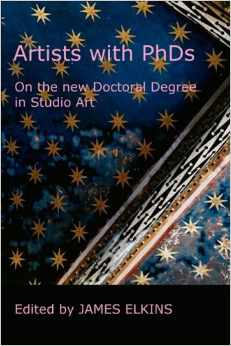 “Now, at the start of the twenty-first century, MFAs are ubiquitous and effectively devalued. A recent job search for a plum position at the University of North Carolina at Chapel Hill attracted almost 700 candidates, the vast majority of whom would have had MFAs. The degree, by itself, has come to be little more than a requirement for competition on the job market, somewhat akin to the requirement of a high school or college diploma. To compete, job candidates need to have the MFA and something else, such as an exhibition record or a second field of expertise. … If history has a lesson to teach here, and I think it does, then the PhD in studio art will spread the way the MFA did a half-century ago. The resistance to it will subside, and it will become the baseline requirement for a competitive job teaching studio art.” — James Elkins, “Introduction,” Artists with PhDs: On the New Doctoral Degree in Studio Art (New Academia Publishing, 2009, p. vii.)
“Now, at the start of the twenty-first century, MFAs are ubiquitous and effectively devalued. A recent job search for a plum position at the University of North Carolina at Chapel Hill attracted almost 700 candidates, the vast majority of whom would have had MFAs. The degree, by itself, has come to be little more than a requirement for competition on the job market, somewhat akin to the requirement of a high school or college diploma. To compete, job candidates need to have the MFA and something else, such as an exhibition record or a second field of expertise. … If history has a lesson to teach here, and I think it does, then the PhD in studio art will spread the way the MFA did a half-century ago. The resistance to it will subside, and it will become the baseline requirement for a competitive job teaching studio art.” — James Elkins, “Introduction,” Artists with PhDs: On the New Doctoral Degree in Studio Art (New Academia Publishing, 2009, p. vii.)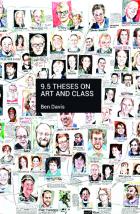 “A final note about the growth of the number of artists is the increasing importance of the investment in education. Commentators sometimes talk about an ‘MFA boom’ in recent years, given the mushrooming size and importance of art schools. Each generation of artists since the 1950s has been more yoked than the last to academia. Today, the number of people holding MFAs has grown to be so enormous that a new phenomenon has appeared on the scene, the Studio Art PhD, pitched as a way for artists looking to support themselves through teaching to be able to distinguish themselves from the MFA crowd.” — Ben Davis, “Art and Inequality,” in 9.5 Theses on Art and Class (Haymarket Books, 2013, pp. 104-05).
“A final note about the growth of the number of artists is the increasing importance of the investment in education. Commentators sometimes talk about an ‘MFA boom’ in recent years, given the mushrooming size and importance of art schools. Each generation of artists since the 1950s has been more yoked than the last to academia. Today, the number of people holding MFAs has grown to be so enormous that a new phenomenon has appeared on the scene, the Studio Art PhD, pitched as a way for artists looking to support themselves through teaching to be able to distinguish themselves from the MFA crowd.” — Ben Davis, “Art and Inequality,” in 9.5 Theses on Art and Class (Haymarket Books, 2013, pp. 104-05).
Cost Accounting
During my graduate-school years in the middle 1960s, relatively few if any schools offered an MFA in creative writing, only an MA such as the one I earned at San Francisco State College. Eventually, in imitation of studio art programs, those programs would adopt the MFA, indicative of a terminal degree in the field. This would enable creative-writing faculty to go tenure-track, a status theretofore available only to teachers with doctorates (or well en route to same).
Inevitably, then, the creative-writing equivalent of the DFA infected the academic discipline of creative writing, though presently fewer than three dozen schools offer one. (You’ll find some basic information about these here and here.)
Noting the roughly coterminous evolution of post-secondary programs in photography and in creative writing, I pointed out in an earlier post that the purpose, value, and consequence of the post-secondary project in creative writing undergoes regular scrutiny and debate by those involved — teachers, students, administrators, grads — while its counterpart in photography steers well clear of any such challenges.
As evidence, consider that Poets & Writers, a bi-monthly magazine published for and read by people in that field, last fall presented its seventh annual MFA issue. Datelined September/October 2013, it ― like its predecessors ― includes a survey of 104 (of the more than 800) such programs in the U.S., plus articles on aspects of teaching and studying within such programs. P&W doesn’t restrict its attention to the academicization of creative writing to this yearly issue. Its profiles of and interviews with writers and other articles regularly engage with these questions.
Nor does this self-scrutiny restrict itself to the pages of this publication (which has a circulation of somewhere around 60,000). You’ll find it featured regularly in The Chronicle of Higher Education and other periodicals and websites. Take a look at Eric Bennett’s February 10, 2014 article in CHE, “How Iowa Flattened Literature,” about the CIA’s Cold War sponsorship of the institutionalization of creative writing.
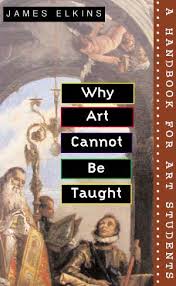 You’ll even find it discussed in large-circulation mainstream periodicals like The New Yorker: see “Show or Tell: Should creative writing be taught?” by Louis Menand, from June 9, 2009. Menand’s nuanced rumination premises itself on Mark McGurl’s book-length study of creative-writing programs and American fiction, The Program Era: Postwar Fiction and the Rise of Creative Writing (Harvard University Press, 2009).
You’ll even find it discussed in large-circulation mainstream periodicals like The New Yorker: see “Show or Tell: Should creative writing be taught?” by Louis Menand, from June 9, 2009. Menand’s nuanced rumination premises itself on Mark McGurl’s book-length study of creative-writing programs and American fiction, The Program Era: Postwar Fiction and the Rise of Creative Writing (Harvard University Press, 2009).
Post-secondary art education also has its extensive pedagogy, which extends back several centuries. That field has bred its own critical thinkers, among them James Elkins, whose Why Art Cannot Be Taught: A Handbook for Art Students (University of Illinois Press, 2001) I commend to your attention. (You’ll find a lengthy excerpt here.)
Too bad that the Society for Photographic Education doesn’t follow these self-critical models in Exposure, its quarterly journal, and at its regional and national conferences. If it did, the discussion of the unbearable sameness of seeing that has resulted from the proliferation of BFA/MFA programs in photography (and the photography DFAs to come) wouldn’t have this blog as its primary forum, and would have been opened up long ago among the SPE’s membership.
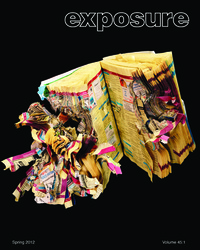 This year the SPE celebrated its 51st year. That’s half a century of largely uncritical rah-rah boosterism for post-secondary photo education. It may strike you as unfair to compare the current state of college-level photo ed to the current college-sports scandal of “Potemkin classes that propel athletes to a degree of little use after they graduate.” But, as I’ve pointed out before, nobody flunks photography. And an MFA from a studio photography program has negligible market value, given the minuscule number of teaching jobs available for the graduates of such programs. The difference between providing gut courses and worthless degrees to young athletes and doing the same to young artists escapes me.
This year the SPE celebrated its 51st year. That’s half a century of largely uncritical rah-rah boosterism for post-secondary photo education. It may strike you as unfair to compare the current state of college-level photo ed to the current college-sports scandal of “Potemkin classes that propel athletes to a degree of little use after they graduate.” But, as I’ve pointed out before, nobody flunks photography. And an MFA from a studio photography program has negligible market value, given the minuscule number of teaching jobs available for the graduates of such programs. The difference between providing gut courses and worthless degrees to young athletes and doing the same to young artists escapes me.
Considered in relation to today’s whopping costs of tuition plus living expenses required to buy an MFA (and, if you go that route, a DFA), not to mention the time involved, post-secondary photo ed has become a bad investment, the return on it at best minimal.
Your First Lesson in Photography
Former students of the late Harry Callahan reported that, on the first day of the fall semester, Harry would take care of the usual housekeeping chores with his incoming Photo I students — roll call, lab rules, office hours, and such — before wandering around the front of the classroom making some terse introductory comments. Somewhere along the line he’d take a $100 bill out of his pocket, show it to them, and fold it into a paper airplane. Then he’d walk over to an open window and sail it out. “That’s your first lesson in photography,” he’d tell them.
The bill may have been fake. If not, Harry may have had someone outside to retrieve it. In any case, he made his point: You didn’t get into photography for the money — to the contrary, it would cost you. A hundred dollars was a substantial sum back then. But it wasn’t symbolic of $40K-100K of student debt that one would carry for years. Loving photography, and even deciding to make it one’s life work, doesn’t require shouldering that burden.
So, on this solemn yet joyous occasion, you’d do well to weigh the value you received for the money you spent on your post-secondary education in photography, and — if you have just become the proud owner of an MFA — think twice before doubling down for a doctorate.
With all that said, I wish everyone involved — students, graduates, faculty, administrators — the very best of luck for the future. Partaaaay!
•
This post supported by a donation from the Estate of Lyle Bongé.


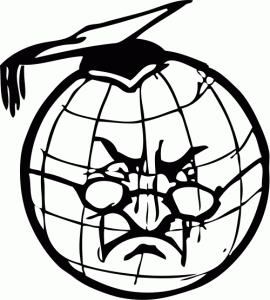
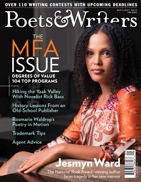




Great piece A.D. I saw the writing on the wall in 1978 when I received my MFA from Iowa. There were 7 full time job openings in 1978 scattered across the country. My debt was laughably small by today’s standards. I accepted a job at Polaroid for better or worse but have missed teaching all these years. I have huge issues with SPE and the CAA who happily perpetuate the myth that these degrees will lead to academic employment. While I do not advocate turning art schools into trade schools they sorely lack any professional practice preparation mainly because the professors themselves do not have any skills in those areas. Personal artistic growth with the guidance of a mentor is still a wonderful thing but when the price is now $100k or more the system is not just flawed but a fraud.
I included a warning about this problem in my 1978 keynote address to the National Conference of the Society for Photographic Education, “No Future For You? Speculations on the Next Decade in Photography Education,” delivered the year you graduated. (It’s in my book Light Readings.) “[T]hose lost souls one encounters in increasing numbers, wandering the corridors of such meat markets as the College Art Association and SPE gatherings, desperate for someone, anyone, to look at their portfolios and take their resumés … are competing frantically for a pitiful handful of jobs teaching others to make art photographs — since, at best, that is all they have been trained to teach — and the ratio of these applicants to available positions is unspeakable. Those educators who brought them to this pass owe them much, much more than an apology.”
A.D.:
Just came across your essay on Ernst Haas at his estate site and wanted to say thanks for that and for your thoughtful regular blog posts.
Mike Waller
Absolutely. I appreciate what you do. Photography is not just about cool pictures.